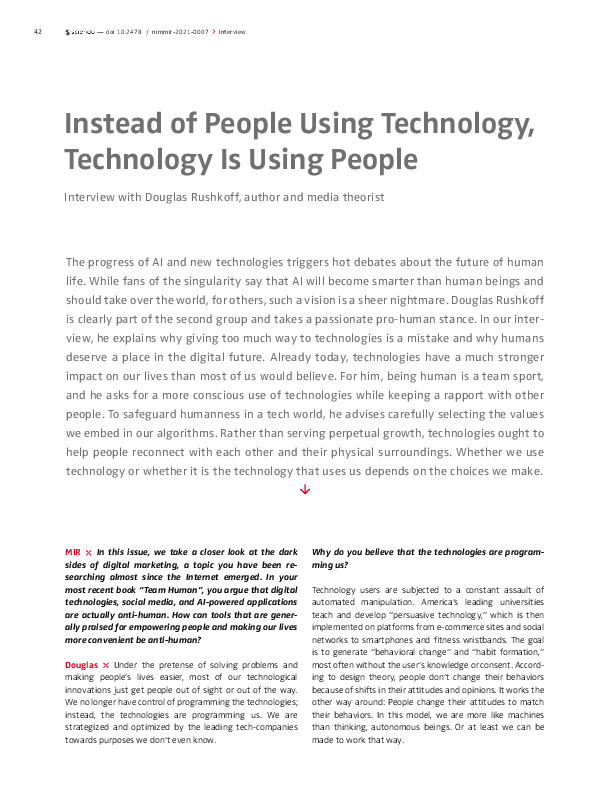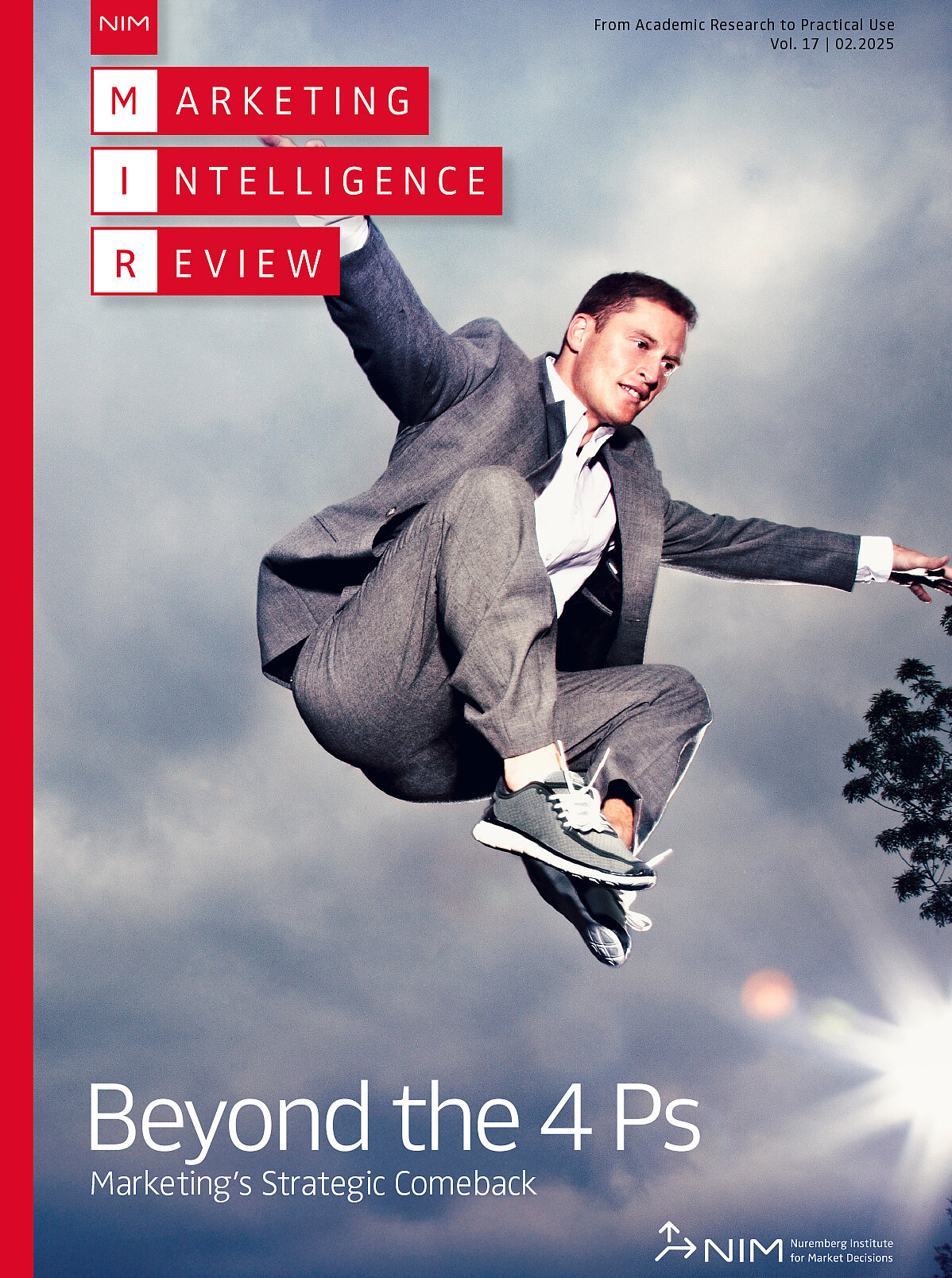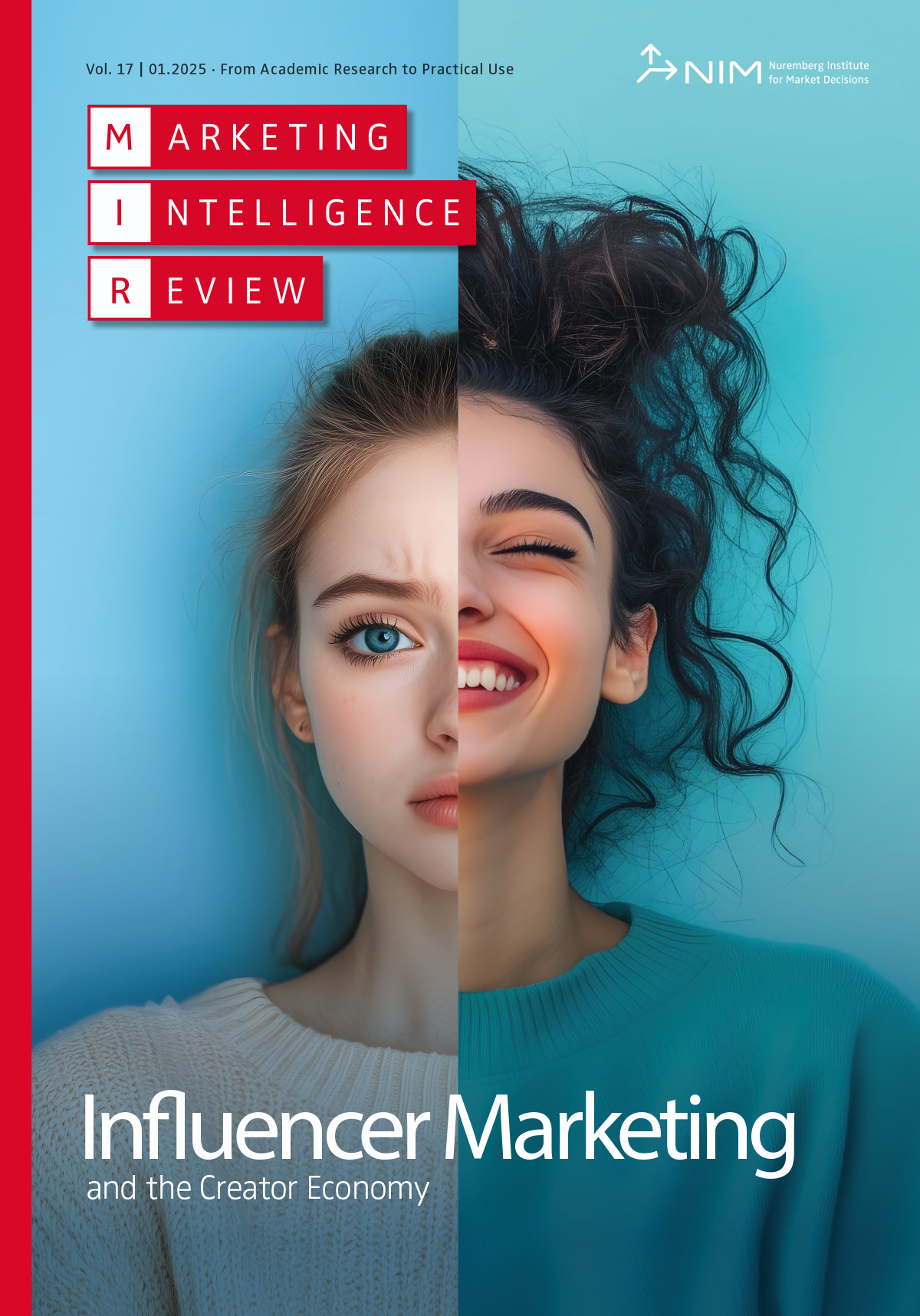Instead of People Using Technology, Technology is Using People
Interview with author and media theorist Douglas Rushkoff
The progress of artificial intelligence and new technologies triggers hot debates about the future of human life. While fans of the singularity say that artificial intelligence will become smarter than human beings and should take over the world, for others, such a vision is a sheer nightmare. Douglas Rushkoff is clearly part of the second group and takes a passionate pro-human stance. He explains why giving too much way to technologies is a mistake and why humans deserve a place in the digital future. Already today, technologies have a much stronger impact on our lives than most of us would believe. For him, being human is a team sport, and he asks for a more conscious use of technologies while keeping rapport with other people. To safeguard the humanness in a tech world, he advises to carefully select the values we embed in our algorithms. Rather than serving perpetual growth, technologies ought to help people reconnect with each other and their physical surroundings.

![[Translate to English:] [Translate to English:]](/fileadmin/_processed_/9/0/csm_2021_1Licht_ins_Dunkel_4f1312736f.png)
![[Translate to English:] [Translate to English:]](/fileadmin/_processed_/e/e/csm_wertenbroch_vol_13_no_1_de_0_b4b4446d15.png)
![[Translate to English:] [Translate to English:]](/fileadmin/_processed_/e/6/csm_Algorithmen-basierte_Werbung_d9b3d65173.png)
![[Translate to English:] [Translate to English:]](/fileadmin/_processed_/3/7/csm_kuebler_pauwels_vol_13_no_1_de_0_683618de8a.png)
![[Translate to English:] [Translate to English:]](/fileadmin/_processed_/c/5/csm_thomaz_vol_13_no_1_de_a076447ee0.png)
![[Translate to English:] [Translate to English:]](/fileadmin/_processed_/1/4/csm_Die_Illusion_der_Wahlfreiheit_f80894d2d0.png)
![[Translate to English:] [Translate to English:]](/fileadmin/_processed_/c/e/csm_Jung__aber_nicht_naiv_55c440f5cd.png)


